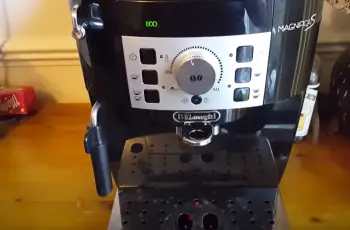Undoubtedly, French press coffee makers rank as one of the top ways to brew coffee, and rightfully so. Distinct from other coffee makers, French presses empower you to manually adjust each component involved in the process. You have the freedom to decide the quantity of beans, the temperature of the water, and the duration of the brewing time.
In comparison with automatic coffee makers, French press coffee makers can be quite confusing. Do you want to know how a French press coffee maker works? Here’s how it goes.
French Press: What Is It
French presses are common coffee brewing devices. They are also known as cafeterias, pistons, or coffee plungers. Paolini Ugo invented it in 1929, and it was patented by Italian designers Attilio Calimani and Giulio Moneta.
Perhaps you are wondering why this appliance isn’t called an Italian press rather than a French press. Attilio Calimani stole the design from a French merchant and metalworker in 1852 who had patented the same device more than 80 years earlier.
It seems quite strange that French presses have only gained popularity a century later, and even more bizarre is how popular they are today. Today, smart coffee makers are controlled via apps on our phones, or by pushing a button.
So why do people still choose to use a coffee maker that has to be operated manually? That is exactly the point. The French press coffee maker offers a novelty that is hard to find these days.
The classic French press isn’t very impressive technologically, especially when compared to pretty much everything else in today’s tech-focused, ever-evolving world. It is rather nice and rustic to have an utterly inefficient and completely manual process. If used correctly, French presses can also bring out some of the best coffees on the market.
The Way They Work
There is a piston-like mechanism that controls the operation of French press coffee makers. A strained coffee is prepared by straining hot or boiling water through grain-ground coffee. The grounds then fall to the bottom of the coffee maker’s container or pot. The resulting drink is oily and thick.
The French Press – Making Coffee
The ingredients for making a cup of coffee are the same as for any other: coffee beans, water, and a press. You can also add sugar if you wish, but this is not essential.
If you want the purest coffee experience, don’t add sugar. As a heat source, you can use a regular kettle or a stove, and there are no specific requirements.
Step 1
Pour a suitable amount of water into your kettle or pot. Aim for a ratio of 8 ounces of water for every 2 tablespoons of coffee for enhanced flavor and richness.
You can either use a kettle or a stovetop to heat the water. Heating the water correctly is undoubtedly an essential step, as if it is not done correctly, the final result will not be nearly as enjoyable.
The ideal temperature for brewing coffee is between 190°F and 205°F. To be certain, you could always use a regular kettle or a thermometer with a variable temperature setting.
Step 2
In a French press, place a few freshly ground coffee beans. Depending on how many you need, you can decide. Pour hot water over the coffee grounds and stir to ensure that all of the grounds are completely dissolved.
Remove the plunger from the carafe and place it inside, then place the lid on. This will prevent the French press from losing heat.
Step 3
Allow the coffee grinds and hot water to sit for about five to six minutes. It’s now time to gently press the plunger to trap coffee grinds between its stainless steel mesh filter and the plunger’s bottom.
Before removing the plunger from the French press, hold it like this for approximately 20 seconds. Once the coffee is brewed, all that’s left to do is pour it into a mug and add sugar and cream to taste.
French Press – Which Coffee To Use
French presses aren’t designed for using particular types of coffee. Personal preferences and tastes are what matter most. The most important factor is not variety, but grind type.
The French press makes the best coffee with coarsely ground beans, as they won’t slip through the filter and end up in your mug, and because larger beans are more permeable to hot water.
A large grind absorbs more water than a fine grind does, and it releases a greater amount of flavor without causing over-extraction. You will then have a strong brew that will not be astringent or acidic in taste.
Conclusion
French press coffee makers have stayed popular because of the novelty associated with them. Modern ‘smart’ coffee makers can’t match that, which is why they are so popular. We hope you have learned some new things about French presses after reading this guide.



